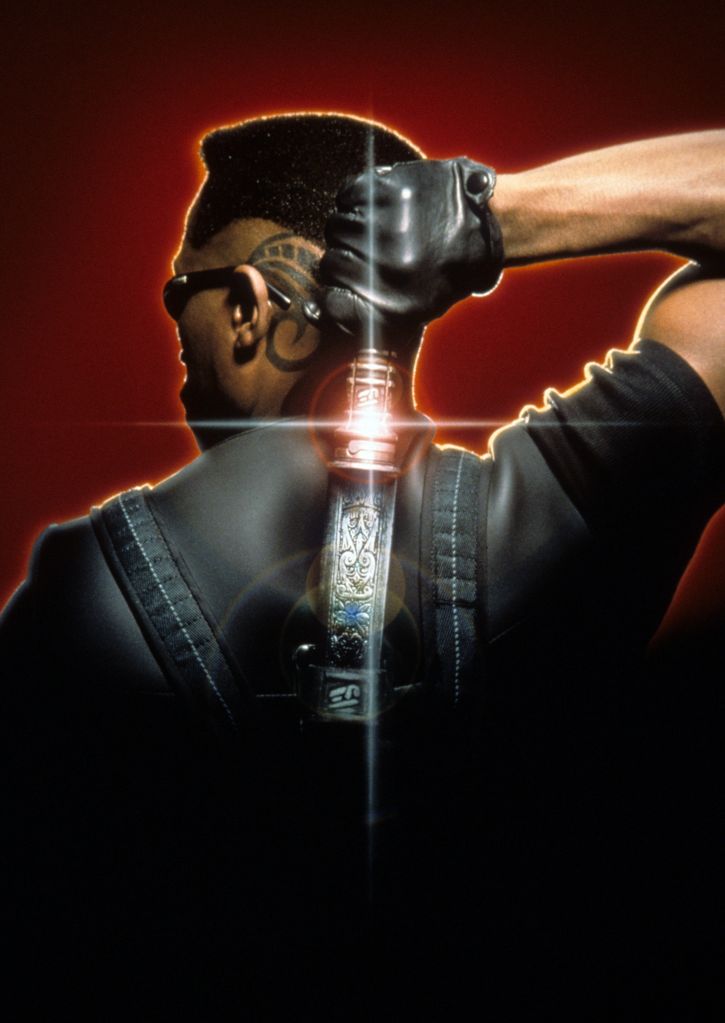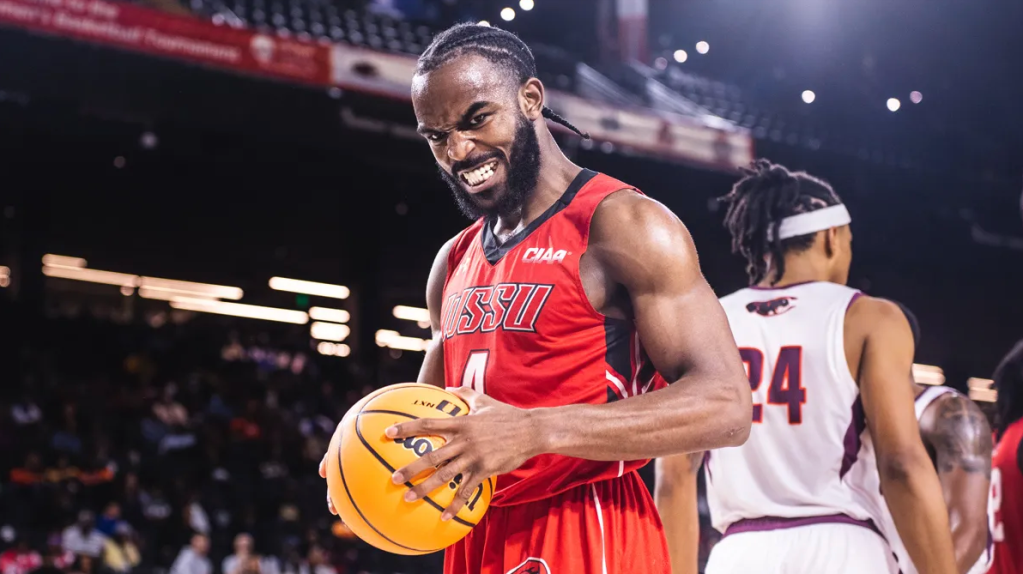
Source: Hulton Archive / Getty
Blade Trinity, the third of the improbably successful Blade franchise, featured Wesley Snipes, Ryan Reynolds, and Jessica Biel. It was directed by David S. Goyer, who’d written the previous two films. The movie was an unmitigated disaster. Snipes’s acting was vain and dramatic. The whole thing felt like a school play put on by Christopher Nolan. But that’s just par for the end of a three-peat. The last ends up being something nearly unrecognizable from the first. The original Blade, though, was a masterpiece.
1998, the same year DMX released It’s Dark & Hell Is Hot, served as a backdrop for a grinning, malefic vampire hunter leathered down to the socks. Half-human, half-vamp himself, the dhampir hunted down hordes of the undead with lethal veracity, gadgets, and a dark sense of humor. Mr. “bet on black” seemed tailor-made for the role, too—a role that would, in its way, serve as a harbinger of things to come for the MCU. You might recall a black-clad, suit wearing superhero named Black Panther that has dominated the conversation this year. Well, Blade is like his grandpa.
In ‘98, everyone was trying to find their way. The two giants of hip-hop were dead. Bill Clinton was on his second stint as the most powerful womanizer in the world. Monica Lewinsky, it was said, had given ole’ Bill some action in the oval office and, well, it was downhill after that. Similarly, dark times loomed at Marvel. The company had been on a rollercoaster ride in the 90s that had hit a swamp.
A lot of people forget that comics and trading cards were once like sneakers. They had a huge aftermarket industry. Each person thought that acquiring rare cards and comics weren’t just a fun, disposable hobby, but a way of making money down the road. To capitalize, Marvel began gimmicky tactics in which they’d give you a card for each comic you bought. To get all the cards, then, you had to pony up for more comics. I remember in school, we’d all huddle around each other with our Marvel Masterpieces hoping to make a trade. My seven Mr. Sinister’s for your one, limited-edition Wolverine.
But the tricks worked too well. Marvel was growing rapidly, buoyed by the hot air of the speculator market and the bottom was about to fall out. Neil Gaiman said as much at a conference where he compared the boom to 17th-century Tulipmania. We’d go on to relive those boom-bust cycles again and again over the centuries. Bought now and public, Marvel needed a hit. Out of nowhere came Blade. The Black vampire slayer nobody knew, played by one of the most interesting action stars of his generation. It was a hit.
The movie racked up upwards of $130 million at the box office. The scenery was gritty, dark, and gory with blood everywhere. In one of the first scenes alone, Wesley Snipes murders an entire club full of techno-loving vampires (seriously, do no vamps listen to R&B?) with a double-sided, silver tipped boomerang-blade. It was great. My friends and I, clustered together in the homie’s small basement bedroom, would watch the flick over-and-over again. We laughed at the ridiculous cruelty of the thing. We were in awe of Blade’s pastoral innocence; his over-reliance on the old guy who played Whistler; his seeming indifference to the suffering of other beings. We also laughed at the leather. It must take him 20 minutes to go the bathroom, we inferred.
It was an iconic moment for representation as well. Will Smith had given us the cool geek archetype in Men In Black in ‘97. On that, we were still reeling. Then came Blade, who allowed us to be teenagers. Smith made adulthood seem like a galley of surprises. You’d find out aliens existed, then somehow all the women across the galaxy would be attracted to you. Snipes’ Blade wasn’t out here for the game. He had a job to do, and he had a certain set of skills that only he could use to do it.
From the set pieces to the soundtrack, on to the costumes and the plot, Blade would set the bar for superheroes to come. This one movie packed so much, it’d put the current MCU to shame. Blade befriends a recently turned hematologist who ends up creating a cure for vampirism. He finds out his mother, who died after giving birth to him and after being a bit by a vampire, is still alive. There’s a rebellion in the vampire ranks, with a new, hip faction trying to wage war on humans. And, in the end, the leader, Deacon Frost, summons a being of supposedly ultimate power that’s blown up by the cure the hematologist creates. That’s at least seven modern Marvel movies in the modern-day condensed into 120 minutes.
Everything it did was ahead of its time and Blade has suffered for it. Even now, its 20th anniversary gone by a mere 24 hours, the film is rarely talked about. But there would be no T’Challa without Blade. And, quite frankly, there’d be no Iron Man or any other MCU film without it either. Just to drive this point home, the film Marvel had made before Blade was Howard the Duck. Incidentally, the very first film I saw when I came to America. It was a complete flop. Luckily, Blade stuck around and saved the day.
















